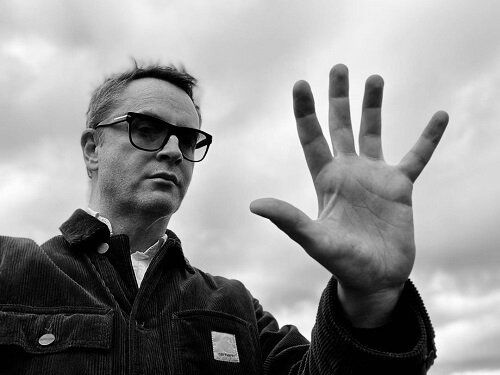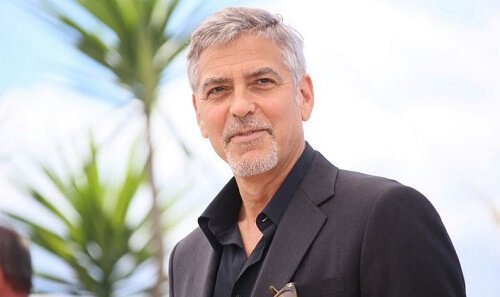In this article, here is the full details of Nicolas Winding Refn about wiki, biography, date of birth, birthplace, zodiac sign, nationality, hometown, age, height, weight, father, mother, family, girlfriend, wife, relationship status, children, profession, education, career, net worth, facts, Wikipedia, and many more.

Nicolas Winding Refn is a Danish director, screenwriter, and producer known for his unique and highly stylized approach to filmmaking. He has garnered both critical acclaim and controversy for his work, which is often characterized by its striking visuals, intense atmospheres, and exploration of dark, psychological themes. Throughout his career, Refn has worked on a wide variety of films that showcase his distinct voice and cinematic vision. His filmography, marked by films such as Drive, Only God Forgives, and The Neon Demon, has earned him a dedicated following and a reputation as one of the most bold and innovative filmmakers of his generation.
This article will delve into the life and career of Nicolas Winding Refn, exploring his early years, influences, breakthrough in the film industry, creative process, and the lasting impact he has had on modern cinema. By examining both his successes and controversies, this article will provide a comprehensive overview of the director’s journey and his place in the history of contemporary filmmaking.
Early Life and Background
Nicolas Winding Refn was born on September 29, 1970, in Copenhagen, Denmark, to a family deeply involved in the arts. His father, Anders Refn, was a well-known Danish film editor, and his mother, Vibeke, was a documentary filmmaker. Growing up in this artistic environment, Nicolas was exposed to the world of cinema from a young age. He would later describe his childhood as being both creative and intense, shaped by the constant presence of film and the influence of his parents.
Despite this creative upbringing, Refn did not initially set out to become a filmmaker. He showed an early interest in art and cinema but initially pursued a career in fine arts. However, as he grew older, Refn became increasingly drawn to the world of filmmaking, leading him to attend the Danish National Film School in Copenhagen. It was at this institution that he began to develop his filmmaking style and started to refine his understanding of the medium. The school exposed him to a wide range of cinematic techniques and gave him the tools he would need to embark on his career.
While at the Danish National Film School, Refn was influenced by a variety of filmmakers, particularly the work of directors such as Stanley Kubrick, Martin Scorsese, and Jean-Luc Godard. These directors would later influence Refn’s own visual and narrative choices, especially in terms of their use of long takes, striking compositions, and exploration of complex, morally ambiguous characters. Additionally, Refn’s interest in the work of filmmakers such as David Lynch and Jodorowsky helped shape his interest in surreal, dreamlike storytelling and his use of sound and music as an integral part of his films.
Early Career and Breakthrough
Refn’s career began with the release of his debut feature film, Pusher, in 1996. The film was a gritty, violent crime drama set in the underworld of Copenhagen, and it introduced audiences to Refn’s distinctive style. Pusher follows the story of Frank, a small-time drug dealer who finds himself in over his head after a drug deal goes awry. The film is marked by its raw, unflinching portrayal of the drug trade and its tension-filled atmosphere.
Despite its low budget, Pusher was a critical success and helped establish Refn as a rising talent in Danish cinema. The film’s gritty realism and intense character study drew comparisons to the work of directors like Scorsese and Michael Mann, and it became an instant cult classic. The success of Pusher allowed Refn to expand his creative horizons and led to the development of two sequels, Pusher II (2004) and Pusher III (2005), both of which further solidified his reputation as a director capable of bringing complex characters and gritty, real-world situations to life on the screen.
In addition to his work on the Pusher films, Refn also directed a number of other notable projects in the early years of his career. One of these was Bleeder (1999), a dark drama that explored themes of friendship, violence, and isolation. While Bleeder did not achieve the same level of success as Pusher, it further demonstrated Refn’s ability to create complex, troubled characters and to navigate dark, morally ambiguous narratives.
Despite his early success, Refn’s international breakthrough would come with his next project, Drive (2011). Drive marked a major departure from the gritty crime films of his earlier work and signaled a shift toward a more stylized, atmospheric approach to filmmaking.
Drive and International Success
Drive (2011) is arguably the film that cemented Nicolas Winding Refn’s place as one of the most innovative directors of the 21st century. The film, based on the 2005 novel by James Sallis, tells the story of a nameless driver (played by Ryan Gosling) who works as a stuntman by day and a getaway driver by night. After forming a bond with his neighbor, Irene (Carey Mulligan), the driver becomes embroiled in a violent criminal scheme that threatens not only his own life but the safety of those he cares about.
Drive was a critical and commercial success, earning Refn widespread recognition and praise for his ability to blend elements of neo-noir, action, and art cinema. The film’s minimalist dialogue, striking cinematography, and electric soundtrack (composed by Cliff Martinez) all became key features of Refn’s filmmaking style. Drive is also notable for its subtle yet intense character study of the driver, whose actions are often driven by a deep sense of moral conflict and a desire to protect the ones he loves.
One of the most significant aspects of Drive is its use of silence and space. Refn’s careful pacing and deliberate use of long takes and wide shots lend the film a dreamlike quality, heightening the tension and emotional impact of its quieter moments. At the same time, the film’s visceral action sequences, such as the infamous elevator scene, contrast with the more contemplative aspects of the story, creating a balance between the film’s brutal violence and its introspective moments of character development.
The film’s success also helped to raise the profiles of its cast, particularly Ryan Gosling, who became an international star after his performance as the enigmatic driver. The film’s cult following also propelled Refn’s career forward, allowing him to explore new and exciting creative projects in the years that followed. Drive earned several awards and nominations, including a Best Director award at the Cannes Film Festival, further cementing Refn’s reputation as one of the most original and exciting filmmakers of the 21st century.
Only God Forgives and The Neon Demon
Following the success of Drive, Refn returned to a more experimental and divisive style with his next two films, Only God Forgives (2013) and The Neon Demon (2016). Both films continued to explore Refn’s trademark themes of violence, morality, and isolation, but they did so in increasingly abstract and provocative ways.
Only God Forgives starred Ryan Gosling as Julian, an American living in Bangkok who is forced to confront the consequences of his violent actions when his mother (played by Kristin Scott Thomas) demands that he avenge the death of his brother. The film is a slow-burn psychological thriller that delves into themes of guilt, revenge, and redemption. Despite its visually stunning cinematography and haunting atmosphere, Only God Forgives was met with mixed reviews. Some critics praised the film for its bold, unconventional style, while others criticized its lack of narrative clarity and excessive violence.
The Neon Demon (2016) was another departure for Refn, this time exploring the world of high fashion and the dark side of beauty. The film follows Jesse (Elle Fanning), a young aspiring model who enters the cutthroat world of Los Angeles fashion only to find herself surrounded by manipulation, envy, and dangerous competition. Like Only God Forgives, The Neon Demon is a visually striking, surreal experience that explores the human desire for perfection and the lengths to which people will go to achieve it. While the film was lauded for its bold visual style and striking cinematography, it also received mixed reviews for its narrative, which some found disjointed and lacking in substance.
Despite the mixed reception of Only God Forgives and The Neon Demon, both films further cemented Refn’s status as a director willing to push the boundaries of cinema and challenge conventional storytelling. His commitment to creating visually arresting films that explore dark, psychological themes has earned him a devoted fan base and a reputation as one of the most audacious filmmakers of his generation.
Creative Process and Filmmaking Style
One of the key features of Nicolas Winding Refn’s filmmaking style is his meticulous attention to visual aesthetics. Refn often employs striking, symmetrical compositions and bold color schemes to convey the mood and tone of his films. His use of lighting and shadows creates a sense of atmosphere that is both immersive and unsettling, drawing the viewer into the psychological world of his characters.
Another hallmark of Refn’s style is his emphasis on mood and atmosphere over plot-driven storytelling. His films often feature long stretches of silence or minimal dialogue, allowing the visuals and music to take center stage. This emphasis on mood is particularly evident in films like Drive, Only God Forgives, and The Neon Demon, where the narrative often takes a backseat to the emotional journey of the characters.
In terms of his creative process, Refn has described his work as being heavily influenced by his own experiences and emotional state. He has mentioned that his films often reflect his own struggles with personal identity and his search for meaning in the world around him. This introspective approach to filmmaking allows Refn to create deeply personal and emotionally resonant stories that speak to universal themes of isolation, guilt, and redemption.
Legacy and Impact
Nicolas Winding Refn’s legacy in the world of cinema is marked by his ability to push the boundaries of conventional filmmaking. His unique vision, which blends art-house sensibilities with genre filmmaking, has made him one of the most influential directors of the past two decades. His work has influenced a new generation of filmmakers, many of whom cite him as a key inspiration for their own creative endeavors.
While his films are not always universally beloved, there is no denying the impact that Refn has had on the landscape of contemporary cinema. His commitment to visual storytelling, his exploration of complex psychological themes, and his willingness to embrace unconventional approaches to narrative structure have made him one of the most distinctive voices in modern filmmaking. Whether through the haunting minimalism of Drive, the disturbing surrealism of Only God Forgives, or the nightmarish beauty of The Neon Demon, Refn continues to challenge audiences and critics alike, leaving a lasting impression on the world of cinema.
In conclusion, Nicolas Winding Refn
’s biography and life story is one of a director who has carved out his own niche in the world of cinema. His work continues to provoke thought and stir controversy, making him an essential figure in the world of contemporary film. Through his unique vision and uncompromising approach to filmmaking, Refn has proven himself to be one of the most innovative and important filmmakers of his generation.
Stay connected with the wikimavani to know more about other trending personalities the wiki, biography, date of birth, birthplace, zodiac sign, nationality, hometown, age, height, weight, father, mother, family, boyfriend, husband, girlfriend, wife, relationship status, children, profession, education, career, net worth, facts, Wikipedia, and many more.










